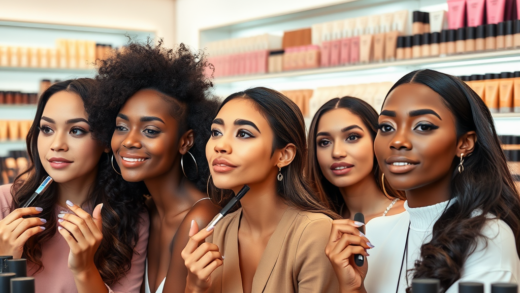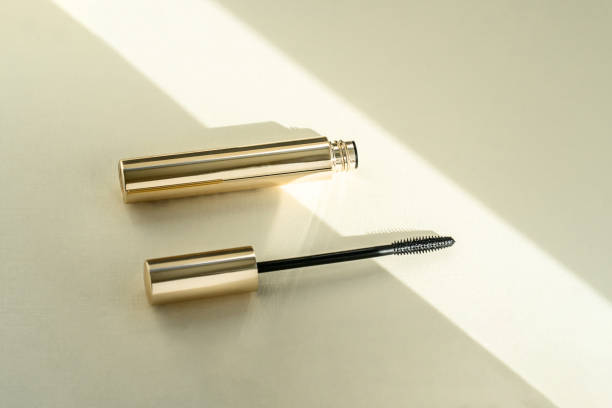Curious about how to apply eyeshadow like a professional makeup artist? You’re in luck! This expert guide will cover the essential techniques, tips, and tools you need to achieve a flawless eyeshadow application. Read on to unlock your inner beauty guru and ensure that your eye makeup always looks on point.
Choosing the Right Tools for Application

Before diving into eyeshadow application techniques, it’s crucial to have the right tools on hand. The quality of your brushes and primers can make a significant difference in how your eyeshadow looks and stays put throughout the day. At a minimum, consider investing in a good eyeshadow primer, a flat shader brush, a blending brush, and an angled brush for precision work. High-quality brushes allow for smoother application and better blending.
Eyeshadow primers are essential as they provide a smooth base for the pigment, helping to keep your eyeshadow vibrant and crease-free. When selecting brushes, opt for synthetic fibers for cream shadows and natural fibers for powder shadows. Remember, the right tools can be the difference between a gorgeous look and a makeup mishap.
Understanding Color Theory
Understanding color theory can significantly impact your eyeshadow application. Different colors can enhance or diminish aspects of your eye color, making it imperative to choose complementary shades. For instance, if you have blue eyes, warm tones like copper or bronze can make them pop, while green eyes look stunning with purples and mauves. Brown-eyed beauties can experiment with a wider range of colors, including blues and greens.
To make the process easier, most eyeshadow palettes come with a range of shades that work well together. You can typically find light, medium, and dark shades, which can be used for highlighting, midtone shading, and adding depth, respectively. Doing a bit of research and experimenting with different colors can help you discover which combinations work best for your eye color and skin tone.
Mastering the Basic Techniques
One of the fundamental techniques to master is the gradient or the “gradient effect,” where colors transition smoothly from light to dark. Start by applying a neutral base color all over your lid. Use a medium-toned shade on your crease and blend well. Finally, add a darker shade to the outer corner of your eye and blend it toward the center of your eyelid. Blending is key to achieving a seamless look.
Don’t forget to highlight the inner corner of your eyes and the brow bone using a light, shimmery shade. This not only brightens your eyes but also gives an illusion of bigger eyes. Another essential technique is “”cut crease,”” which involves tracing your natural crease with a darker shade and then “cutting” it with a lighter shadow or concealer. This adds depth and drama to your eyes, making them a focal point of your makeup look.
Adding Dimension with Layers
Layering is a fantastic technique to add depth and dimension to your eyeshadow. Start with a primer to create a smooth canvas. Apply a translucent powder to set the primer. Next, layer on your base color; follow it with a second layer if needed to build the intensity. Then, move on to your medium and dark tones, blending each layer thoroughly to avoid harsh lines.
Using different textures, like combining matte and shimmer shadows, can also add complexity to your look. For example, a matte shade in the crease with a shimmery lid can create a beautiful contrast. Always remember that patience and practice are crucial when it comes to layering; with time, you’ll learn how to blend seamlessly, giving your eyes a multi-dimensional look.
Final Touches and Finishing Techniques
The final touches are just as important as the application process itself. Highlighter along the brow bone and inner corner of your eyes can make a significant difference. Additionally, ensure that you clean up any fallout with a makeup wipe or a bit of setting powder. Eyeliner can add definition, whether you prefer a sharp wing or a soft, smudgy line.
Finally, don’t underestimate the power of mascara to complete your eyeshadow look. A few coats of volumizing or lengthening mascara can make your eyes pop and tie the entire look together. For an extra boost, consider adding false lashes or lash extensions. These final touches can elevate your eyeshadow from good to absolutely stunning, ensuring you look polished and professional.
FAQs
1. What is the best way to prevent eyeshadow fallout?
Apply an eyeshadow primer and set it with a translucent powder before applying your eyeshadow. This method creates a smooth base for the pigment to adhere to, reducing fallout.
2. How do I choose the right eyeshadow shades for my eye color?
Using complementary colors enhances your natural eye color. For blue eyes, opt for warm tones like copper; for green eyes, purples and mauves work well. Brown eyes can experiment with a variety of shades including blues and greens.
3. Can I use the same brush for different eyeshadow shades?
Ideally, you should use separate brushes for different shades to avoid muddying the colors. If you must use the same brush, clean it with a brush cleanser or a makeup wipe between applications.
4. What is the easiest way to blend eyeshadow?
To blend eyeshadow efficiently, use a clean blending brush and work in small circular motions. Gradually build up the color intensity and keep blending until there are no harsh lines.
5. How can I make my eyeshadow last longer?
Using a quality eyeshadow primer is essential for longevity. Set your primer with a setting powder and use long-lasting, high-pigment eyeshadows. Finishing with a setting spray can also help lock your look in place.


